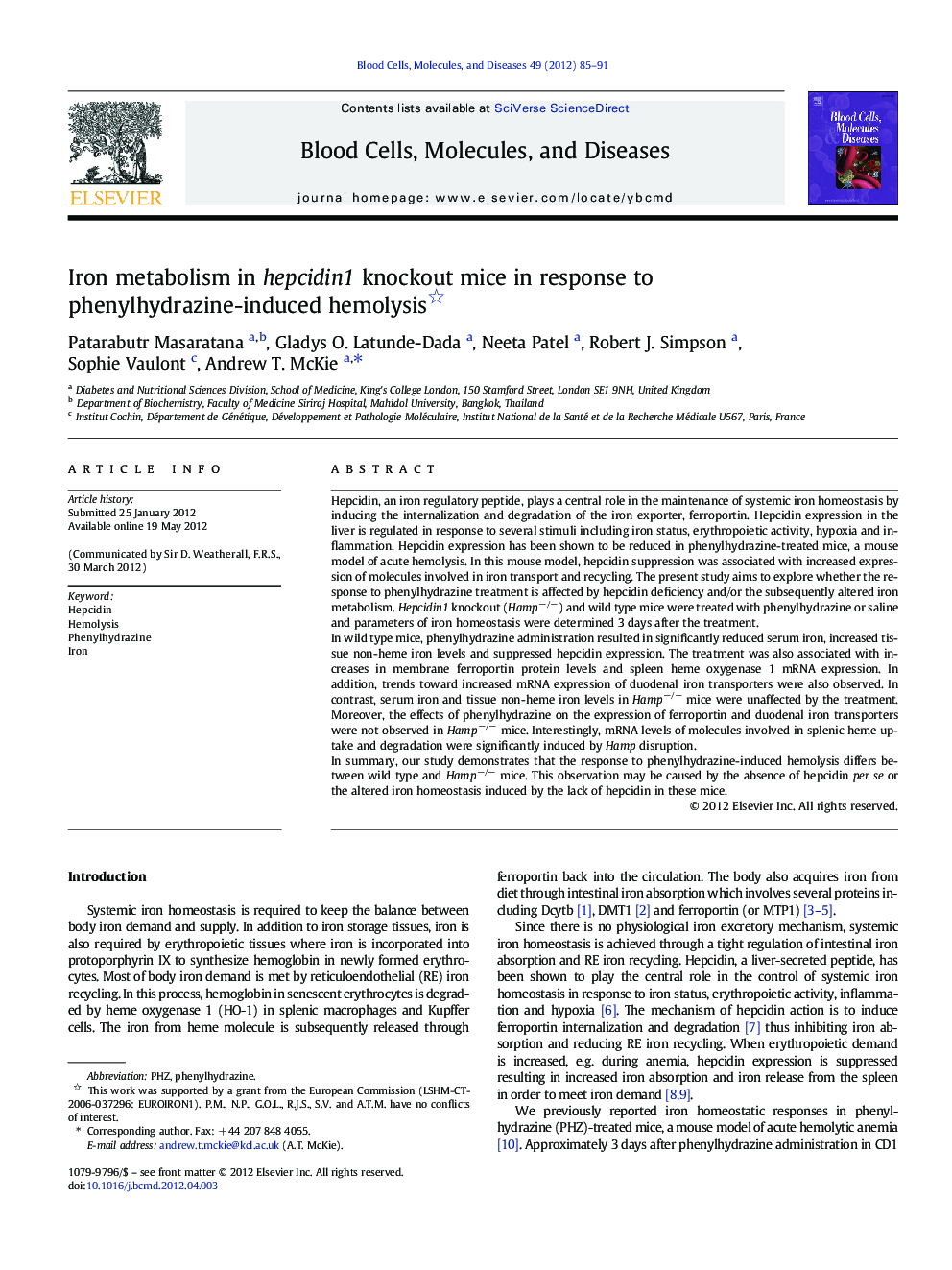| کد مقاله | کد نشریه | سال انتشار | مقاله انگلیسی | نسخه تمام متن |
|---|---|---|---|---|
| 2827560 | 1162452 | 2012 | 7 صفحه PDF | دانلود رایگان |

Hepcidin, an iron regulatory peptide, plays a central role in the maintenance of systemic iron homeostasis by inducing the internalization and degradation of the iron exporter, ferroportin. Hepcidin expression in the liver is regulated in response to several stimuli including iron status, erythropoietic activity, hypoxia and inflammation. Hepcidin expression has been shown to be reduced in phenylhydrazine-treated mice, a mouse model of acute hemolysis. In this mouse model, hepcidin suppression was associated with increased expression of molecules involved in iron transport and recycling. The present study aims to explore whether the response to phenylhydrazine treatment is affected by hepcidin deficiency and/or the subsequently altered iron metabolism. Hepcidin1 knockout (Hamp−/−) and wild type mice were treated with phenylhydrazine or saline and parameters of iron homeostasis were determined 3 days after the treatment.In wild type mice, phenylhydrazine administration resulted in significantly reduced serum iron, increased tissue non-heme iron levels and suppressed hepcidin expression. The treatment was also associated with increases in membrane ferroportin protein levels and spleen heme oxygenase 1 mRNA expression. In addition, trends toward increased mRNA expression of duodenal iron transporters were also observed. In contrast, serum iron and tissue non-heme iron levels in Hamp−/− mice were unaffected by the treatment. Moreover, the effects of phenylhydrazine on the expression of ferroportin and duodenal iron transporters were not observed in Hamp−/− mice. Interestingly, mRNA levels of molecules involved in splenic heme uptake and degradation were significantly induced by Hamp disruption.In summary, our study demonstrates that the response to phenylhydrazine-induced hemolysis differs between wild type and Hamp−/− mice. This observation may be caused by the absence of hepcidin per se or the altered iron homeostasis induced by the lack of hepcidin in these mice.
Journal: Blood Cells, Molecules, and Diseases - Volume 49, Issue 2, 15 August 2012, Pages 85–91